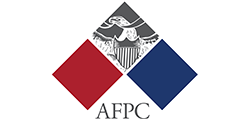COMMUNISTS WIN ELECTION IN KYRGYZSTAN’S "ISLAND OF DEMOCRACY"
By Gulsara Osorova (3/15/2000 issue of the CACI Analyst)
BACKGROUND: According to the new Parliamentary Election Code of the Kyrgyz Republic, fifteen seats from a total of sixty are allocated to political parties and movements in the Legislative Assembly. At least 5% of the votes must be won in order to get a seat. The remaining forty-five seats in the Legislative Assembly are allocated to members of the Assembly of People’s Representatives.
CHECHEN CLAN MILITARY TACTICS AND RUSSIAN WARFARE
By Dr. Theodore Karasik (3/15/2000 issue of the CACI Analyst)
BACKGROUND: An important building block of Chechen combat capabilities are Chechen social structures that consist of tribal/clan formations divided between low-land inhabitants and the mountaineers. When threatened by outside forces Chechens have traditionally used intertribal fusion to confront invaders. Indeed, the Chechens have been in their present geographical area for hundreds of generations and are fiercely independent.
THE DECLINE OF CENTRAL ASIAN INTEGRATION
By Richard Dion (3/29/2000 issue of the CACI Analyst)
BACKGROUND: Each of the Central Asian states perceives national security threats from other states in the region. Kazakhstan fears the threat of militant Islam and terrorism from Tajikistan. Kazakhstan is also currently engaged in a rather bitter border dispute with Uzbekistan.
DOES TAJIKISTAN PARLIAMENTARY ELECTIONS SPELL THE END OF THE UTO?
By Noor Umarov (3/29/2000 issue of the CACI Analyst)
BACKGROUND: The United Tajik Opposition (UTO) began in the Spring of 1992 when different opposition groups and parties coalesced around the leadership of four political groups and a prominent individual, the country’s most influential religious figure, Akbar Turajonzoda. At that time, Turajonzoda was not a member of any political party, but he supported political and economic reforms and recognized the rights of Muslims to practice their faith openly, without hindrance. The UTO’s first success was achieved in May 1992 when UTO members were included into a coalition government with President Emoli Rakhmanov.


